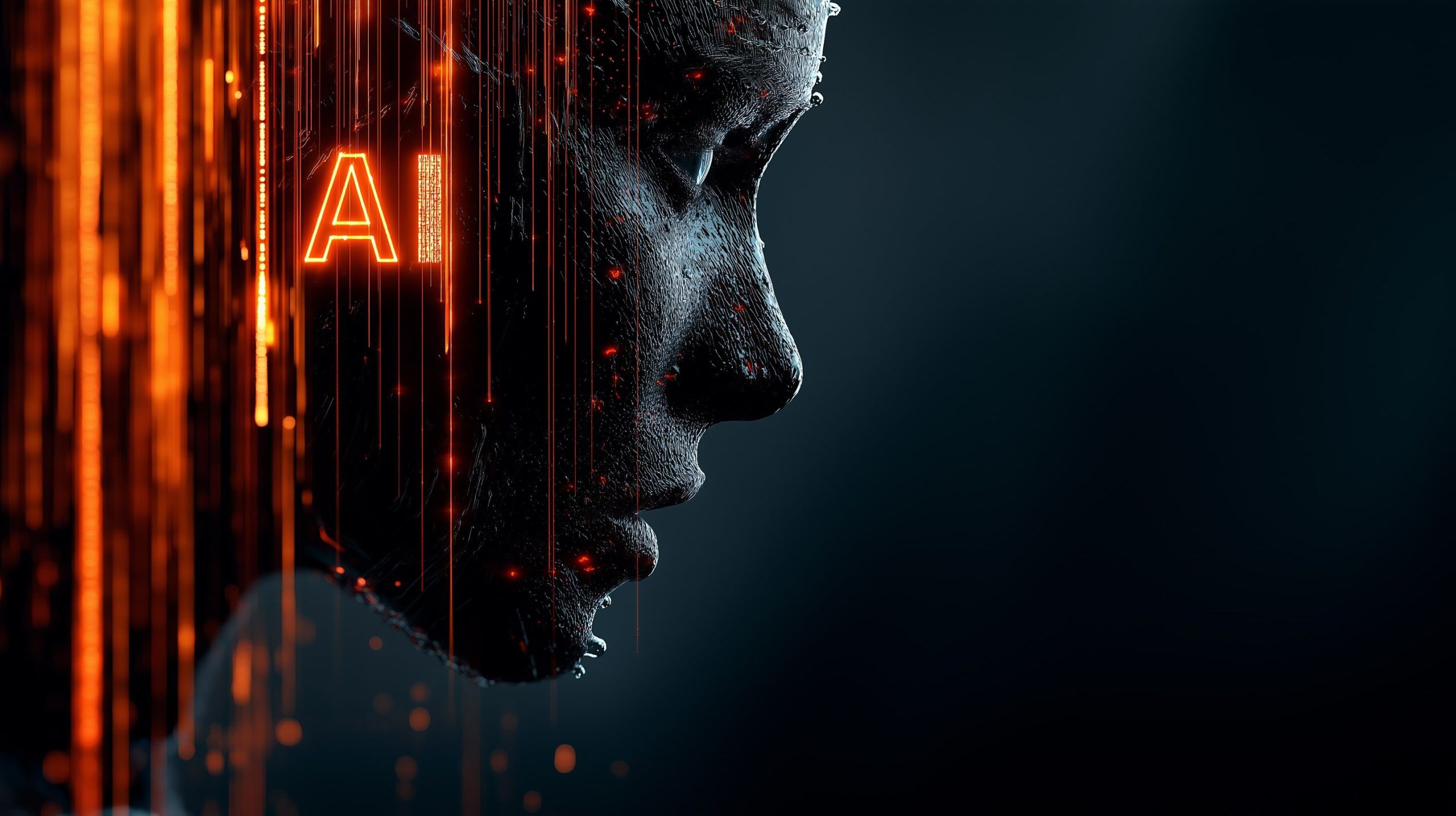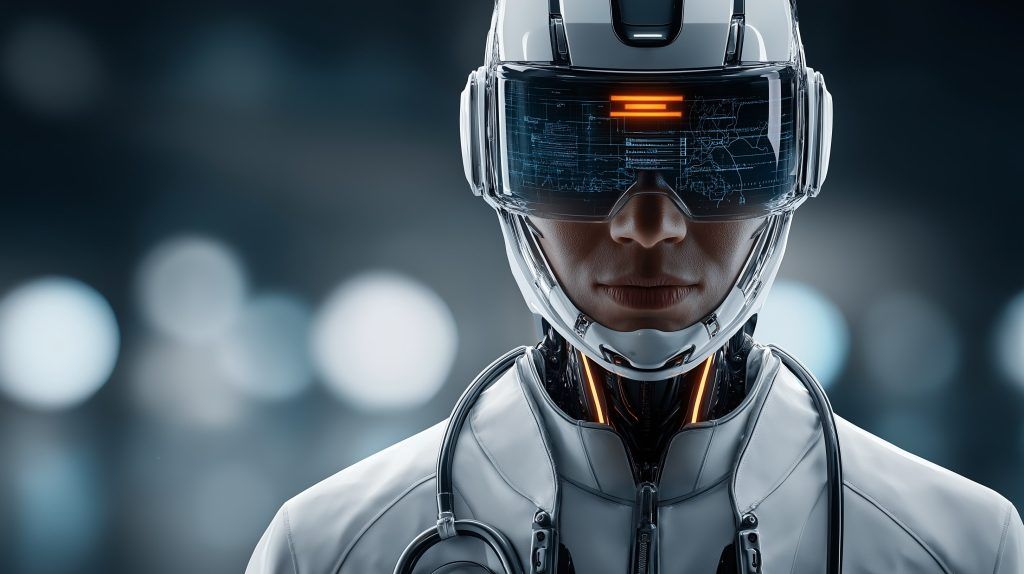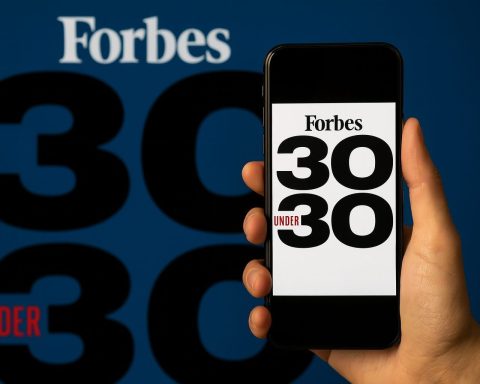- OpenAI released GPT-4o in May 2024 as a natively multimodal model that accepts text, audio, image, and video input and can generate text, audio, or images, delivering GPT-4-level performance at roughly 50% lower cost and faster speed.
- Google DeepMind Gemini, unveiled in December 2023, ships as Gemini 1.0 Ultra, Pro, and Nano and has exceeded state-of-the-art on 30 of 32 academic tasks, including 90% on the MMLU benchmark.
- Meta’s AudioCraft, announced in 2023, includes MusicGen for music and AudioGen for sound effects and was open-sourced, while MovieGen, released by late 2024, can generate short videos with audio up to 16 seconds of video and 45 seconds of audio.
- OpenAI’s Sora, revealed in early 2024, demonstrates text-to-video generation producing short films up to 60 seconds from written prompts.
- Runway Gen-2, released in 2024, enables text-to-video creation and style transfer to existing footage.
- Google DeepMind Genie 2, unveiled in 2024, can generate an endless variety of action-controllable, playable 3D environments from a prompt and lets an AI agent or human roam the world for up to a minute.
- Be My Eyes uses GPT-4 Vision to describe images to blind or visually impaired users via a conversational exchange.
- CLIP (OpenAI, 2021) introduced a shared embedding space for images and text, enabling zero-shot cross-modal understanding in multimodal AI.
- Training these multimodal models relies on web-scale multimodal data, self-supervised learning, and reinforcement learning with human feedback, with collaborations like OpenAI and Microsoft providing large-scale supercomputing power.
- Apple’s Vision Pro, launched in 2024, embodies spatial computing that enables AI-enabled AR/VR experiences, integrating vision, language, and generation in real time.
Less than a year after text-only chatbots like ChatGPT captured the public’s imagination, a new generation of artificial intelligence is emerging – one that can see, hear, speak, and even create entire worlds. These multimodal AI systems go beyond text, integrating vision, audio, and even 3D environment generation. The result is AI that can interpret images, carry on conversations in natural speech, generate music and video, and simulate interactive scenarios. This report explores how AI is evolving beyond ChatGPT and what it means for technology and society.
Over the past year, tech leaders have unveiled AI models that blur the lines between modalities. OpenAI, Google, Meta, and others are racing to build AI that understands and generates multiple forms of media, not just words. “Multimodal functionality will soon become table stakes for AI-powered products,” as one industry expert put it [1]. From virtual assistants that see through your camera to creative tools that conjure up imagery or sound on demand, the next wave of AI promises more natural and immersive human-computer interactions. At the same time, it raises new challenges around creativity, jobs, misinformation, and how humans collaborate with increasingly capable machines. In the sections below, we delve into recent breakthroughs in multimodal AI, the expanding capabilities they offer, use cases across industries, expert insights, the key technologies powering this shift, and the broader implications for society.
The Rise of Multimodal Generative AI
A flurry of recent developments and product launches indicates that AI is rapidly expanding its sensory repertoire. No longer confined to text output, the latest AI models can analyze images, generate audio, produce video, and more. Here are some of the breakthrough multimodal AI systems leading this new wave:
- OpenAI GPT-4o (2024) – OpenAI’s GPT-4 “omni” model (GPT-4o) represents a major leap toward all-in-one AI. Announced in May 2024, GPT-4o accepts any combination of text, audio, image, and even video as input, and can generate text, audio, or images as output [2] [3]. OpenAI describes GPT-4o as “a step towards much more natural human-computer interaction”, noting it responds to spoken prompts almost as fast as a person in conversation [4]. Impressively, GPT-4o matches the text and coding performance of GPT-4, while significantly improving vision and audio understanding – and doing so 50% cheaper and faster than before [5] [6]. OpenAI CEO Sam Altman hailed it as the company’s “best model ever” with “natively multimodal” capabilities [7]. Unlike earlier pipelines that chained separate models for speech or vision, GPT-4o handles all modalities with one neural network, preserving rich information like tone or image detail end-to-end [8] [9]. In Altman’s words, “this new thing feels viscerally different. It is fast, smart, fun, natural, and helpful.” [10]
- Google DeepMind Gemini (2023) – Unveiled in December 2023, Gemini is Google’s answer to GPT-4 and represents a family of multimodal models built from the ground up by the DeepMind team. CEO Demis Hassabis introduced Gemini as “the most capable and general model we’ve ever built.” [11] [12] Gemini was designed to be natively multimodal, pre-trained on text, images, code, and more from the start [13]. The first release, Gemini 1.0, comes in three sizes: Ultra (for highly complex tasks), Pro (for general use, also powering Google’s Bard chatbot), and Nano (optimized for mobile) [14]. Early benchmarks show Gemini Ultra exceeding the state-of-the-art on 30 of 32 academic tasks ranging from natural image, audio, and video understanding to math reasoning [15]. In fact, it’s the first model to outperform human experts on a major academic knowledge test (90% on MMLU) [16]. Built with “thinking” steps to improve reasoning, Gemini can plan solutions before responding [17] [18]. Perhaps most impressively, it can natively combine inputs like a piece of code, an image, and a question – and produce a coherent answer. Sundar Pichai, Google’s CEO, noted Gemini marks the next step in a journey to make AI “more capable and general,” with potential to unlock new applications for people everywhere [19] [20].
- Meta’s Generative AI Suite – Meta (Facebook’s parent company) has been infusing multimodal AI across its products, while also open-sourcing key tools. In 2023, Meta announced AudioCraft, a framework that generates high-quality music and sound effects from text descriptions [21]. AudioCraft includes models like MusicGen (for music) and AudioGen (for sound effects), which Meta has released openly to spur innovation [22]. By late 2024, Meta took aim at video generation with a new model called MovieGen. MovieGen can create realistic video clips with sound based on a user prompt, such as a clip of animals surfing or a person painting – complete with matching background music and sound effects [23] [24]. The videos are short (up to 16 seconds, with audio up to 45 seconds) [25], but Meta claims quality on par with top generative media startups [26]. For example, MovieGen can take a real photo of a person and animate them doing something new (like running with pom-poms or skateboarding through puddles), or edit an existing video by inserting objects or altering scenes [27]. “It can rival tools from leading media generation startups,” Meta touted, though for now the company is cautious about public release due to potential risks [28] [29]. Beyond standalone models, Meta has also woven multimodal AI into user-facing assistants. Meta AI, the company’s chatbot available in WhatsApp, Messenger, and Instagram, was upgraded in 2024 to accept voice and image inputs. Users can now talk to Meta AI by voice and hear it respond in audio (even using celebrity voice options), and they can send photos to it and get detailed descriptions or edits in return [30] [31]. At Meta’s developer event, CEO Mark Zuckerberg highlighted how advancements in generative AI now make it possible to “build [this] technology into every single one of our products.” [32] From auto-generating Instagram photo backgrounds to translating video Reels into different languages with matched lip-sync, Meta is rapidly adding multimodal intelligence to its social apps [33] [34].
- Other Notable Advances – The multimodal boom extends beyond the tech giants. OpenAI’s Sora model, revealed in early 2024, demonstrated AI text-to-video generation: it can create short films (up to a minute long) from a written prompt, maintaining impressive visual fidelity and coherence [35] [36]. In one demo, Sora produced cinematic footage – e.g. a woman striding down a neon-lit Tokyo street and fantastical scenes with woolly mammoths – purely from text descriptions [37] [38]. Startups like Runway have likewise released text-to-video tools, enabling creators to generate clips by describing a scene. On the audio side, companies such as ElevenLabs are leading in realistic voice synthesis, allowing AI to speak with human-like intonation or clone a specific voice. There are also open-source efforts combining modalities: for instance, projects that connect image-generation models (like Stable Diffusion) with language models so you can have a dialogue with an AI about a generated picture. All these developments point to a trend: AI is no longer confined to one sense. Whether it’s OpenAI, Google, Meta, or innovative startups, the race is on to build AI that can see, listen, speak, and create in many forms.
What Can Multimodal AI Do?
By integrating vision, speech, and other capabilities, these new AI systems unlock a broad array of capabilities that were science fiction until recently. Here are some of the things the latest multimodal AI models can do:
- Understand and Describe Images: AI can now answer questions about pictures, identify objects within images, and generate detailed captions. For example, Google Gemini and OpenAI’s GPT-4 (via its Vision upgrade) can interpret a chart or photo you give them and explain its contents. Meta’s assistant will even identify what’s in your Facebook photos – “you can share a photo of a flower … and ask Meta AI what kind of flower it is,” the company says [39]. This goes beyond basic labeling: the AI can discuss the image, compare it to others, or pull out specific details on request. For blind or low-vision users, such image-to-text abilities are transformative. The app Be My Eyes, for instance, uses GPT-4’s vision feature as a “Virtual Volunteer” to describe images taken by users – letting someone hear a description of a photo or even get answers about it through a conversational exchange [40] [41]. This kind of AI-powered visual understanding is like giving the model eyes: it can analyze charts, screenshots, memes, you name it, and discuss them as if it “sees” the world.
- Generate Images and Art: On the flip side, multimodal AI can create images from text (text-to-image), or modify images based on instructions. Tools like OpenAI’s DALL·E 3, Midjourney, and Stable Diffusion have already popularized the ability to turn a written prompt into a vivid picture – whether it’s a photorealistic landscape or a cartoon avatar. Diffusion models in particular have revolutionized image generation, “shattering the state-of-the-art of image generation” in the past two years [42]. The basic idea is that the AI starts with random noise and diffuses it into a coherent image that matches the prompt, guided by patterns learned from millions of pictures [43]. Now these capabilities are being built into larger systems. GPT-4o, for example, can output images as part of its response, not just text [44]. This means you could ask a single AI agent to “design a logo and explain it to me” and it can both generate the graphic and provide a written rationale. Image generation has many uses: designers can prototype ads or product concepts instantly, authors can get illustrations for stories, and everyday users can create memes and artwork with simple instructions. The technology is still evolving – e.g. handling complex scenes with multiple characters can be hit-or-miss – but it’s improving rapidly. Companies are also combining image creation with editing: Meta’s apps let you send an image and ask the AI to tweak it (like “replace the background with a rainbow” or “change my shirt to blue”) [45]. In short, AI is learning a new form of creativity – one that manifests visually.
- Recognize Speech and Talk Back: Modern multimodal AIs can carry on a conversation with you through spoken language. Speech-to-text technology has reached human-level accuracy in many cases (witness tools like OpenAI’s Whisper transcription model). Building on that, models like GPT-4o take audio input directly – you can talk to them and they’ll listen – and then they can respond with synthesized speech. OpenAI reports GPT-4o can process an audio query and start answering in as little as 0.2–0.3 seconds, about as fast as a person’s reply in normal conversation [46]. This effectively enables real-time voice assistants far more capable than today’s Siri or Alexa. The AI can understand nuanced requests or multiple speakers in an audio stream, because it processes the raw sound, not just a transcribed text [47]. On the output side, AI voice generation has become uncannily realistic. With just a few seconds of sample audio, models can clone a voice or generate a completely artificial voice that sounds authentic. Meta’s research demo Voicebox (announced 2023) could speak in six languages and do stylistic mimicry, although it wasn’t released publicly due to misuse concerns. Still, plenty of others (from big firms to startups) are deploying voice AIs. Meta’s assistant recently gained a voice and even offers a choice of celebrity voices like actor John Cena or legend Dame Judi Dench, synthesized for the AI’s responses [48]. We’re also seeing speech-to-speech translation: you speak in one language, the AI outputs voice in another, preserving your vocal timbre – essentially AI dubbing. (Meta is testing this for Instagram Reels, automatically translating a creator’s spoken video from English to Spanish with matched lip sync [49].) The ability for AIs to hear and speak opens up natural communication. Instead of typing prompts, we can converse with future AI agents as if they were live participants, whether on our phones, in our cars, or in AR glasses.
- Compose Music and Audio: Generative AI isn’t limited to images and text – it’s making strides in audio and music creation as well. Given a genre, mood, or a few sample bars, AI models can produce original music tracks or sound effects. Meta’s AudioCraft toolkit, for example, includes MusicGen, which was trained on hundreds of hours of music and can output new musical compositions from a text prompt (e.g. “a relaxing jazz song with piano and saxophone”) [50]. Another component, AudioGen, focuses on sound effects – you can ask for “footsteps on wooden floor” or “dogs barking in a park” and get realistic audio clips [51]. These models even handle longer coherence; MusicGen can maintain melody and structure over multiple minutes of generated music [52]. OpenAI has also experimented in this space (their Jukebox model in 2020 generated songs with lyrics, in various artist styles). The upshot is AI that can generate new sounds: from background scores for videos, to ambient noise for games, to helping musicians brainstorm tunes. It won’t replace human musicians, but it can function as a powerful creative assistant or a quick way to get stock audio. And because Meta open-sourced these models [53] [54], developers around the world are now building on them – customizing AI to produce niche audio effects or train on specific music styles. Even voice generation can be seen as part of this audio capability: imagine an AI that can not only write the script for a podcast but also perform it in a natural-sounding voice with background music and effects added – that’s where we’re headed.
- Create and Edit Video: The year 2024 has been a breakout for AI-generated video. Although still in early stages, AI can now generate short video clips from text descriptions or modify existing videos. OpenAI’s Sora model demonstrated text-to-video prowess, producing up to 60-second clips that “understand and simulate the physical world in motion” [55]. Its outputs included everything from a fashion model walking down a street to an imaginary creature in a fantasy scene, all from detailed written prompts [56] [57]. Meanwhile, startups like Runway have publicly released Gen-2, which allows users to create a few seconds of video from a prompt or turn an existing video into a new style (e.g. make my drone footage look like a cartoon). In the big tech arena, Meta’s MovieGen is pushing the envelope by generating video complete with audio. In internal demos, MovieGen took simple prompts (“a dog surfing”) and generated 5-15 second video clips, or accepted a user’s photo and animated them doing an activity [58]. It can also edit videos: Meta showed an example where they took a video of a man running in a desert and had the AI insert pom-poms in his hands – essentially adding an object to a real video seamlessly [59]. In another example, it changed the scene’s environment (turning a dry parking lot into a wet one with puddles splashing as a skateboarder rides) [60]. These capabilities hint at a future where video editing might be as easy as telling an AI what you want to see. We could eventually say “make this 2D photo into a 3D moving scene” or “generate a tutorial video of how to fix a bike” and watch an AI craft it. While current results are rudimentary and limited in length, quality is improving. Notably, AI-generated video has huge implications for entertainment (storyboarding, visual effects) and could spawn new forms of social media content. It also raises the stakes for deepfakes and misinformation – which we’ll discuss later.
- Build Interactive 3D Worlds and Simulations: One of the most fascinating frontiers is AI that can generate 3D environments and interactive simulations. Researchers are working on AI “world models” that output not just a static image or clip, but a whole virtual world that an agent (or person) can step into and explore. Google DeepMind recently unveiled Genie 2, a model that can produce “an endless variety of action-controllable, playable 3D environments” from a single prompt [61]. For example, you give Genie an image or a brief description of a scene (say, a medieval town or a lush forest), and Genie will generate a 3D world in that style. You can then move around inside it using keyboard controls, and the world will respond realistically to your actions [62] [63]. In DeepMind’s demo, Genie could take an AI agent (or a human player) and let it roam a generated world for up to a minute, including interactions like jumping or bumping into objects [64] [65]. This capability is enabled by training on many videos and game environments – the model learned to simulate physics, object behaviors, and plausible animations all on its own [66] [67]. The potential uses are vast: game developers could quickly prototype new levels and terrains via AI; robots could be trained in AI-generated virtual worlds before testing in the real world; architects and urban planners might visualize full 3D scenes from a mere sketch. We’re essentially witnessing the dawn of AI holodecks – interactive simulations generated on demand. It’s early, but progress is quick. Even without perfect 3D generation, today’s AIs can already assist with 3D content creation (for instance, generative models exist that create 3D object models or textures from text prompts, aiding animators and designers). As spatial computing and the metaverse trend grow, AI-generated worlds could be the content that fills those spaces.
- Act as Interactive Multimodal Agents: Bringing all these capabilities together, we get the concept of AI agents that can perceive and act in digital or physical environments. For example, imagine a household robot equipped with a multimodal AI: it can see via a camera, hear via a microphone, and converse or respond with actions. Such an AI agent could take verbal instructions like “check if my stove is off” – it would navigate, visually identify the stove’s status, and tell you (speaking in natural language) whether it’s on or off. On our personal devices, multimodal AI could function as a universal assistant. Instead of today’s isolated tools (one for speech commands, another for text, another for images), a single AI could handle all inputs. If you have smart AR glasses, you might point at a billboard written in a foreign language and have the AI translate it in your ear in real time, or ask it, “What is this building I’m looking at?” and see an annotated answer in your view. “Glasses that can take in [a] video feed … and generate results (in real-time)” are on the horizon, notes Ken Hubbell, an AI executive, describing the near future of wearable assistants [68]. Similarly, such agents could facilitate richer human-AI interaction in virtual spaces – consider a video game character who not only chats with you using an LLM brain, but also sees your in-game gestures or hears your voice commands. Companies are already prototyping AI-powered NPCs for games that remember conversations and respond with appropriate voice lines. In summary, by combining vision, language, and action, AI is moving toward being an active participant in our world – not just a text oracle. It can take in the full spectrum of sensory data and produce responses or behaviors across modalities, much like a human assistant might.
Applications Across Industries
The capabilities above aren’t just neat demos; they are being applied (or soon will be) across a wide range of fields. Multimodal generative AI has the potential to transform how work is done in entertainment, education, healthcare, design, simulations, accessibility, and more. Let’s look at some industry use cases and examples in each:
- Entertainment & Media: The entertainment industry is already experimenting with AI-generated content for films, TV, games, and marketing. In Hollywood, generative AI is being eyed to assist in visual effects, storyboarding, and even full production. “Technologists in the entertainment industry are eager to use such tools to enhance and expedite filmmaking,” reports The Guardian [69]. For instance, a director could quickly pre-visualize a scene by describing it to an AI video generator instead of relying on a full crew for test shoots. Studios are partnering with AI startups: Lionsgate recently gave the generative video company Runway access to its film library to train AI models, aiming to let filmmakers “augment their work” with AI assistance [70]. In gaming, AI can generate art assets (like textures or 3D models) on the fly, or create intelligent NPC dialogue, cutting down development time. Music and audio production can also be streamlined – need a quick soundtrack or sound effect? An AI like AudioCraft might conjure one up, which a human can then refine. Media localization is another area: we now have AIs that can dub voices and translate content into multiple languages almost instantly, which can help films and online videos reach global audiences. On the flip side, the entertainment sector is grappling with challenges like copyright and deepfakes. Actors and writers have voiced concerns about AI mimicking their likeness or writing style without permission. During the 2023 Hollywood writers’ strike, one issue was how studios might use AI to generate scripts or actor images, raising calls for ethical guidelines. Expect new creative roles to emerge – AI content curator, AI VFX artist – as humans work with these tools. Overall, generative AI can be a powerful assistant in the creative process, speeding up production and enabling imaginative visuals or sounds that might have been too costly or time-consuming otherwise.
- Education & Learning: Multimodal AI stands to make education more interactive and personalized. We already saw the rise of AI tutoring with text-based models (like Khan Academy’s experiment with GPT-4 as an automated tutor). Now, imagine a tutor that can show as well as tell. Students could ask a question and not only get a text explanation, but also an AI-generated diagram or an audio narration, depending on how they learn best. For example, a student struggling with a geometry problem could have the AI draw a step-by-step construction on a diagram while explaining the solution in voice. In language learning, an AI that speaks could converse with students in the language they’re practicing, correcting their pronunciation in real-time. In subjects like history, AI-generated videos or augmented reality scenes could help bring historical events to life in the classroom. A teacher might say, “AI, create a virtual simulation of an ancient Roman marketplace for my students to explore in VR,” making history immersive. Spatial computing devices like AR/VR headsets can leverage such AI to populate virtual field trips or science experiments. Because AI can adjust content to individual needs, it could also help learners with disabilities – e.g. generating sign-language video explanations for deaf students, or describing images verbally for visually impaired learners. Moreover, generative AI can assist teachers by creating custom educational materials: worksheets, illustrative examples, even quizzes generated from a textbook chapter automatically. This could free up teachers’ time for more one-on-one student interaction. There are challenges, of course – ensuring accuracy and preventing misinformation or bias in educational content is critical. But if used carefully, AI that can see and create could make learning more engaging. Students won’t be limited to static textbooks; they can interact with dynamic content across multiple modes (text, video, audio, 3D) and maybe even collaborate with AI in creative projects (imagine an art class where students brainstorm with an image-generating AI). Education may become a dialog not just between teacher and student, but also including AI as a helpful teaching aide.
- Healthcare: In medicine and healthcare, multimodal AI could improve diagnostics, training, and patient care in significant ways. Medical practice relies on many data types – lab reports (text), scans like X-rays and MRIs (images), pathology slides (microscopic images), patient interviews (speech), etc. AI that handles all these modalities could synthesize information for doctors or even flag issues that single-modal systems might miss. Medical image analysis is already a well-established AI field (e.g. detecting tumors in radiology images using deep learning). With multimodal models, one could combine image analysis with patient history and doctor’s notes to get a more holistic assessment. For instance, an AI could look at a chest X-ray and the accompanying radiologist’s report and automatically draft a summary or suggest follow-up tests, cross-referencing what it “sees” in the scan with textual medical knowledge. Generative AI can also create synthetic medical data for training or research, such as lifelike images for rare conditions to help doctors practice diagnoses without real patient data. Another use case is in medical training and simulation: AI-generated virtual patients (with realistic visuals and vital signs) could be used to simulate surgery or emergency scenarios for trainees, who can interact with the simulation as if it were real. Multimodal AI assistants might aid doctors in real time – consider a surgeon wearing AR glasses that live-stream the operation to an AI, which then highlights anatomy or potential issues in the display, essentially acting as a context-aware guide. For patients, generative AI can enhance care by producing, say, easy-to-understand visuals explaining a surgery, or by converting after-visit instructions into the patient’s native language and voice (audio). In mental health, AI avatars (visual + conversational) are being explored as virtual therapists or companions to support patients between sessions. There are even prototypes of AI that can analyze audio – like a patient’s voice or coughing sounds – for diagnostic cues (some respiratory illnesses, for example, have distinct cough patterns AI can pick up). And for accessibility in healthcare, an AI that listens and transcribes doctor-patient conversations can help create better records or aid patients who have difficulty hearing. Of course, healthcare AI must be rigorously validated – errors can be life-threatening. Privacy is also a concern when dealing with sensitive medical data, so any use of these models needs compliance with regulations (like HIPAA in the U.S.). Still, the promise is that multimodal AI could reduce doctors’ workloads, catch details humans might overlook, and improve patient understanding of their own health through more intuitive communication.
- Design, Engineering & Creativity: In fields like architecture, product design, and engineering, multimodal generative AI is becoming a creative collaborator. Designers can use AI image generators to instantly visualize variations of a concept – for example, generating dozens of lamp designs or car body shapes from a textual description. This allows rapid prototyping and ideation at a speed never before possible. Some architects are experimenting with AI to generate floor plans or building facades given certain constraints (like “generate a building exterior that maximizes natural light and has organic curved features”). Because the AI can output images or even 3D models, it becomes easier to iterate through ideas before committing to detailed CAD drawings. In graphic design and marketing, tools like Adobe’s Firefly (which incorporates generative AI) let users extend images, change backgrounds, or create custom illustrations just by typing prompts – integrated directly into Photoshop and Illustrator. Fashion designers can have AI suggest new patterns or even drape virtual fabrics on models to see how an outfit might look. Engineers can ask AI to generate schematics or simulate how an object would behave: for instance, an AI might produce a conceptual diagram of a machine part and also output a brief video animation of it in operation. This multimodal approach – text, image, animation together – helps teams communicate ideas better. Generative models using diffusion have even been used to suggest new industrial designs (like novel chair shapes, based on training data of furniture) that a human designer might not have imagined alone. And it’s not just visuals – creative coding has AI help now too. GitHub’s Copilot (powered by GPT) is a text-based code assistant, but we can imagine a future where a programmer can sketch a UI layout and an AI will generate the code for it, or conversely, read code and visualize roughly what the interface looks like. The creative process is becoming more hybrid: humans provide high-level guidance and aesthetic judgment, while AI can churn out variations, handle grunt work (like resizing assets or trying every color scheme), and even suggest entirely outside-the-box options. Importantly, the human remains in the loop – the designer chooses which AI outputs to pursue and refine. The result can be a productive partnership where creatives have an expanded toolkit. There are concerns about AI originality (since models learn from existing works, there have been debates about intellectual property when AI mimics a certain artist’s style). Despite that, many artists are embracing AI as a medium – using it to generate elements which they then incorporate into final artworks. All in all, generative AI is acting as a “visual imagination” engine and a tireless assistant, enhancing creativity and speeding up the path from concept to realization.
- Simulation & Training: Beyond specific industries, simulation is a broad use case that multimodal AI supercharges. We touched on AI creating virtual 3D worlds – this is incredibly useful for any domain that uses simulations for training or planning. Consider flight training: rather than using pre-programmed scenarios, an AI-driven simulator could generate ever-changing flight conditions or emergency situations to test a pilot, guided by high-level parameters from an instructor. In military or disaster response training, AI could quickly simulate new terrains and crisis events (like a virtual city under earthquake conditions) for teams to practice in VR, providing a more diverse range of scenarios than manually created ones. Autonomous vehicle developers currently use simulated environments to train self-driving cars – future generative world models might build infinite variations of roads, traffic, and weather to truly stress-test the AI drivers. Robotics is another area: robots can be trained in virtual replicas of the real world. If an AI can both simulate an environment and control an agent within it, we get into reinforcement learning territory – essentially training AI agents in AI-generated worlds. DeepMind’s Genie 2, for example, is aimed at generating training environments for embodied AI agents, helping create a “limitless curriculum of novel worlds” to make the agents more general and robust [71]. In business, simulation with generative models can aid decision-making – e.g. creating synthetic data or “digital twins” of real-world systems. Picture a factory floor simulated in 3D where an AI tests different workflow configurations, or a network security AI generating possible cyber-attack scenarios to improve defense prep. Interactive training is also enhanced by multimodal avatars: for instance, customer service trainees could practice with an AI avatar that both looks and talks like a customer, reacting in real time to the trainee’s responses (this uses vision to display an avatar, NLP to generate dialogue, and speech synthesis for the voice). Governments and companies are looking into AI for training because it can reduce cost – you don’t need as many human role-players or physical props if an AI can simulate them. As computing power grows, these simulations will become more realistic and longer in duration. We might eventually see persistent AI-generated worlds used for everything from testing AI algorithms to entertainment (think AI-generated open-world games). The key point is that generative AI enables on-demand creation of complex scenarios, which is incredibly valuable wherever trial-and-error learning or planning is needed.
- Accessibility: One of the most heartening applications of multimodal AI is in making the world more accessible to people with disabilities. We’ve already discussed how image-describing AIs benefit those who are blind or visually impaired by narrating the visual world to them. This can extend to video (e.g. summarizing a live sports game’s visuals via audio) and environments (AI in smart glasses telling a blind user what it “sees” around them). For the deaf and hard-of-hearing community, AI can provide real-time closed-captioning for conversations (speech-to-text via AR glasses) and even translate spoken words into sign language via on-screen avatars. Conversely, people who cannot speak (such as those with certain motor neuron diseases) are using AI voice synthesis to communicate – they type or use assistive devices to input text, and an AI voice (potentially even a clone of their own voice from before they lost speech) reads it out loud. This is a direct outcome of text-to-speech advances. Captioning and translation bots on platforms like Zoom already provide live subtitles, and with more multimodal AI, these could become more accurate and even convey tone or emotion (imagine captions that note “[laughing]” when someone laughs in a meeting, detected from audio). Another example: for people with cognitive disabilities or those who just need simpler communication, AI could automatically turn complex documents into easy-read illustrated versions – summarizing with images and simple text to aid understanding. Augmentative and alternative communication (AAC) devices can get a boost: an AAC system could use an AI image generator to help a non-verbal child point to pictures representing what they want to say, or use a chatbot to expand a one-word input into a full polite request. Accessibility in digital content is also improved; e.g., AI can generate image alt-text at scale for websites (and it’s getting pretty good – Twitter even integrated a GPT-4 powered image description tool for users). Video content can be auto-labeled if AI detects it’s been manipulated or generated, addressing accessibility of information (Meta has plans to watermark and label AI-generated ads on its platform [72]). The bottom line: multimodal AI can act as a assistive bridge between different forms of information and human senses. It can give those with impairments new tools to perceive content – be it by turning visuals into audio, audio into text, text into imagery, and so on. With proper development focused on inclusivity, AI has a real chance to level the playing field, allowing more people to access information and express themselves in ways they couldn’t before.
Key Technologies Enabling Multimodal AI
How are these “AI that can do it all” being built? Several core technologies and research advances are driving the shift from single-modal to multimodal AI:
- Transformer Models: The transformer architecture that revolutionized language AI (e.g. GPT-series) is also powering many multimodal models. Transformers are versatile neural networks originally designed for sequence data (like sentences), but researchers have adapted them for images, audio, and more. OpenAI’s first image AI, DALL·E, actually used a transformer under the hood to generate images token by token [73]. Today’s state-of-the-art, like GPT-4, Gemini, and others, often use hybrid transformer designs – for example, a vision transformer processes image patches, a language transformer processes text, and then they share information in a unified transformer layer. The transformer’s ability to attend to different parts of input data makes it adept at finding patterns across modalities. Gemini, for instance, was “pre-trained from the start on different modalities” and then fine-tuned, which DeepMind says helps it “seamlessly understand and reason about all kinds of inputs … far better than existing models.” [74]. In practice, this means the same model can take an array of pixels or an audio waveform as input, just as easily as text. The transformer architecture provides a common “language” for images, text, audio – all can be encoded as sequences that the model attends to. This one-model-for-everything approach is what GPT-4o demonstrates by handling text, images, and sound with the same weights [75]. It simplifies the pipeline (versus juggling separate OCR, speech, and text engines) and tends to preserve contextual nuance (e.g. linking what it hears with what it sees fluidly). In short, the transformer has become the foundation of multimodal AI, enabling high-level reasoning and generation regardless of input type.
- Diffusion Models: A major catalyst for generative imagery and video has been diffusion models. These models, which emerged around 2021–2022, introduced a new way to generate data by gradually denoising random noise into a coherent output. They have proven especially powerful for image generation, surpassing the older GANs in quality and diversity. As one tech blog noted, “a completely novel approach to text-to-image generation through the use of diffusion models has surfaced — and it’s here to stay.” [76] Diffusion models work in two phases: a forward process that adds noise to training images until they become pure noise, and a reverse process where the model learns to remove noise step by step, essentially learning how to paint an image into existence [77]. When connected with language (via a technique called conditional diffusion), they allow text prompts to guide that image generation at each step. This is how OpenAI’s DALL·E 2, Google’s Imagen, and Stable Diffusion all work. For video, the same principle applies but in multiple frames (making it much more computationally heavy). The reason diffusion is key: it produces high-resolution, detailed outputs and is relatively stable to train. It’s also flexible – you can modify the diffusion process to edit images (by initializing it with an existing image plus noise). Companies have embraced diffusion in their products, from Adobe (for image synthesis in Photoshop) to Runway (for video). As we move to more modalities, diffusion models are being researched for audio too (and have been used in music generation and improving speech quality). In audio, diffusion can clean up noise in recordings or generate sound waveforms from scratch in a controlled manner. Meanwhile, scientists are working on optimizing diffusion for faster generation (since producing an image might take dozens of steps). Techniques like latent diffusion speed it up by operating in a compressed representation space instead of pixel space [78]. The diffusion model’s rise is a prime example of how new algorithms enable new capabilities: it unlocked the creative potential of AI by finally making high-fidelity generative media possible. Without it, we wouldn’t be talking about photorealistic AI images or believable AI video today.
- Multimodal Embeddings and Alignment: A crucial piece of the multimodal puzzle is getting different types of data to speak the same language inside the model. This is where embeddings come in – numerical representations of data. Pioneering work like OpenAI’s CLIP in 2021 showed that by training a model on image-caption pairs, one can learn a shared embedding space for images and text [79] [80]. CLIP’s neural network jointly trained an image encoder and a text encoder so that, for example, a photo of a cat and the caption “a cute cat” end up close together in the embedding space [81]. This alignment enabled powerful zero-shot abilities – you could give CLIP a new image and a list of text labels, and it would pick which label best matched the image, without having been explicitly trained on that task [82] [83]. CLIP essentially taught AI how to connect visuals to language meaning. Its approach has influenced many subsequent multimodal models [84]. Now we see similar alignment happening with audio and text (e.g. models that align speech with transcripts) and even audio with images (useful for tasks like audio-visual scene understanding – think of an AI that watches a video and listens to it). Having a unified embedding space or at least a way for modalities to interact is fundamental. Some models achieve this by fusion layers (combining modality streams midway), others by final embedding alignment (like CLIP). The result is cross-modal understanding – e.g., an AI can “point” to part of an image when referring to it in text, or match a sound it hears to a likely visual source. When GPT-4’s vision feature was introduced, it likely used an image encoder whose embeddings were fed into the language model, allowing the text model to attend to visual features. Google’s Gemini is explicitly designed to handle code, text, images, etc. together, which surely involves sophisticated embedding strategies to make, say, an image of a graph and a chunk of code both understandable to the same model. In summary, techniques for multimodal alignment ensure that an AI can correlate what it hears with what it sees with what it reads. This is analogous to how our brains form associations between different senses. It’s a big reason why today’s multimodal AIs feel much more coherent and “holistic” in their responses – they’re not siloed experts, but integrative generalists. As these embeddings improve, we’ll see even tighter integration, like AI that can take a movie scene and generate novel dialogue consistent with the actors’ body language, or vice versa.
- Training at Scale (and Data): One enabling factor that can’t be ignored is the scale of data and compute being used to train these models. GPT-4o, Gemini, and others are trained on enormous datasets that include text crawled from the web, images from online collections (and possibly video, audio sets, etc.), code repositories, and more. Training a single model on such diverse data is computationally expensive, requiring advanced AI hardware (like clusters of GPUs or TPUs) and clever engineering. OpenAI, for instance, collaborated with Microsoft to build supercomputing infrastructure for training its models. Google’s Gemini was trained on “web-scale multimodal data”, likely leveraging Google’s vast image/video datasets (YouTube, etc.) combined with DeepMind’s research data and techniques. One reason these multimodal models are emerging now is that only recently have we had the capability to train large models on multiple data types concurrently. It’s not just throwing everything together – data needs to be curated and balanced (the model shouldn’t overfit to one modality at the expense of others). New training paradigms, like self-supervised learning, have made it possible to use raw data (like images with their alt-text from the web, or videos with transcripts) without needing hand labeling for every task. This significantly expands what data can be fed during training. There’s also a trend of chaining models or modalities during training – e.g., first train a model on a text task, then fine-tune it on an image+text task to endow it with visual abilities (this is sometimes called multi-stage training). Another key technology is reinforcement learning with human feedback (RLHF), which was used heavily to align language models with user preferences. For multimodal models, similar techniques are being developed – using human feedback on image outputs or speech outputs to fine-tune the model’s generations to be more helpful or accurate. We’re also seeing system-card level efforts: OpenAI published a GPT-4o system card detailing how it was evaluated for risks across modalities [85], and Google has been careful about responsible AI development for Gemini, even if details are scant. Overall, the engineering innovations in large-scale training (like model parallelism, optimized architectures, and tons of data) are the backbone making these multimodal marvels possible. As hardware continues to improve (e.g., specialized AI accelerators, more memory, faster interconnects), we’ll be able to train even larger and more seamlessly integrated models – perhaps what today takes 20 separate models will be done by one model with 20 modalities.
- Spatial Computing Interfaces: While not a “core technology” of AI algorithms, the rise of spatial computing – devices like AR glasses, VR headsets, and the coming wave of mixed-reality gadgets (like Apple’s Vision Pro) – is an important enabler and beneficiary of multimodal AI. These devices demand AI that can understand context (e.g., a Vision Pro might use eye tracking and cameras to know what you’re looking at) and provide output in various forms (visual overlays, audio cues, haptic feedback). The new AI models are well-suited to power such experiences. For instance, an intelligent AR assistant needs computer vision to recognize objects, language understanding to interpret your voice query, and perhaps generative abilities to display info or translate text in your view. The convergence of AI and spatial computing means AI is leaving the 2D screen and entering our 3D world. A practical example today is the Be My Eyes app’s AI feature (powered by GPT-4 vision): a blind person can point their phone camera (a spatial computing action) and the AI will describe the scene, effectively narrating the physical world to them [86]. Now project forward: AR glasses could do this continuously, with the AI whispering descriptions or alerts. Apple’s Vision Pro (launched 2024) has been touted as a “spatial computer”, and while Apple hasn’t revealed much about AI in it, we can imagine third-party apps using multimodal models to enable things like gesture recognition (vision), voice control (audio), and dynamic content generation (maybe an AI decorates your virtual room on command). Similarly, Meta’s Quest headsets are getting more AI features to allow users to build VR environments just by describing them. The tech enabling this includes advanced sensors, but the brains remain the AI models we’ve been discussing. In summary, spatial computing provides the platform for multimodal AI to shine in daily life, and in turn, multimodal AI provides the intelligence to make spatial computing devices truly smart and context-aware. The synergy of the two could redefine how we interact with information – not on a flat screen, but embedded in our environment, mediated by AI that understands multiple modalities.
Societal Implications and the Road Ahead
The transition to AI that can see, hear, and create raises profound societal implications. As we embrace this next wave of AI, we must consider how it will impact creativity, jobs, misinformation, and our collaboration with machines:
- Augmenting Human Creativity: On the positive side, multimodal generative AI can supercharge human creativity and productivity. These tools lower the barrier to creating complex media, allowing individuals and small teams to punch above their weight. A single person with an idea can now generate illustrations, voices, music, and video to prototype that idea – tasks that used to require specialized skills or large budgets. This democratization of creation could lead to an explosion of new content and innovation. Artists and creators are already using AI as a creative partner: it can suggest inspiration, fill in tedious details, or produce numerous variations to spark new directions. OpenAI’s Sam Altman observed that while they initially set out to create AI that would produce benefits directly, it’s turning out that “other people will use it to create all sorts of amazing things that we all benefit from.” [87] In other words, the true value of these AIs may lie in empowering human creators to explore ideas that were previously unreachable. We’ll likely see new art forms emerging that blend human and AI contributions (for example, “AI cinematography” where a director orchestrates AI-generated scenes as part of a film). Some worry that using AI might dilute originality, but historically, new tools (camera, photoshop, synthesizer, etc.) have often led to more creativity, not less – they expand the palette of what’s possible. As AI handles grunt work or provides instant mock-ups, humans can focus on higher-level creative decisions and refinement. It’s a bit like having a super-talented intern who works at the speed of thought and never sleeps. The key will be using AI collaboratively rather than viewing it as competition. When human vision and taste guide the AI’s generative power, the results can be truly exciting and novel.
- Job Disruption and Evolution: With any transformative technology, there are concerns about job displacement. Multimodal AI has the potential to automate tasks across a wide range of professions. For instance, graphic designers might worry that clients will use DALL·E 3 instead of hiring for simple illustrations, or junior video editors might find some of their work (like basic editing or adding effects) done automatically by tools. Media production, customer service (with AI avatars), translation, education – few fields will remain untouched. However, rather than a wholesale replacement of jobs, we might see a shift in job roles and skills. Many jobs will evolve to incorporate AI: a designer might become more of a curator/editor who guides AI outputs and fine-tunes them to client needs. A video editor might spend less time on tedious cutting and more on creative storytelling, delegating routine edits to AI. New jobs will also emerge – roles like AI prompt engineer, AI ethicist, synthetic data curator, or AR experience designer could be commonplace in the future. Historically, technology tends to automate portions of jobs rather than entire occupations, at least in the short term. AI can handle an expanding set of tasks, yes, but there’s often a need for human judgment, aesthetic sense, and accountability that keeps people in the loop. In fields like healthcare or law, for example, AI might draft reports or analyze images, but a human professional will verify and make final decisions. Over time, the workforce will need to adapt: learning to work alongside AI, developing skills that complement automation (like complex problem-solving, interdisciplinary thinking, or interpersonal skills that AI lacks). Another aspect is job creation through new industries – spatial computing and metaverse content, for instance, could become huge sectors employing many (just as the web did in the ‘90s), fueled by AI-generated content pipelines. Policymakers and businesses will have to manage the transition, providing retraining where needed. The hope is that AI will free humans from mundane tasks and unlock more creative and high-value endeavors (much like spreadsheets automated calculations but led to more analytical finance jobs). Yet we must be vigilant: if productivity gains from AI aren’t shared or if entire communities get left behind, the socio-economic disruption could be significant. It’s a time for proactive dialogue between industry, workers, and governments to ensure this AI revolution benefits many and not just a few.
- Misinformation and Deepfakes: A sobering implication of AI’s new creative powers is the potential for misuse in generating misinformation, deepfakes, and fraudulent content. When AI can produce photorealistic images, convincing audio clips of anyone’s voice, or even full video, the line between real and fake content blurs. We’ve already seen instances of deepfake videos swapped into politics and deepfake audio used in scam calls (where an AI mimics someone’s relative asking for money, for example). As these tools become more accessible and higher-quality, “concerns about how AI-generated fakes are being used in elections” and other domains are mounting [88]. Fake news could get more visually and sonically persuasive – think bogus “video evidence” of events that never happened. This threatens to undermine trust in media and what we see/hear with our own eyes and ears. Combatting this will require technical and social solutions. On the technical side, researchers are developing detection algorithms and watermarking systems. For example, SynthID by Google DeepMind can subtly watermark AI-generated images to help identify them later [89], and many companies have pledged to implement such markers for AI content. Media platforms are exploring methods to label AI-generated posts or ads [90]. However, it’s a cat-and-mouse game – detection can lag as generation improves. Society will need to cultivate a more critical media literacy: people may have to approach sensational audio or video with the same skepticism they (hopefully) already apply to suspicious text sources. There is also likely to be a legal and regulatory response: laws against malicious deepfakes (e.g. non-consensual deepfake pornography or election interference) are being considered in various jurisdictions. Identity verification and content provenance systems (like cryptographic signing of genuine videos) could also help maintain trust. In essence, the information ecosystem will need new defenses for a world where seeing is no longer believing by default. It’s worth noting that AI can also be part of the solution – the same multimodal analysis that lets AI generate fake content can be used to spot subtle artifacts or inconsistencies in fake media. Ultimately, society will adapt, but there may be a period of chaos and confusion in the interim, as we adjust to these newfound powers of illusion.
- Ethical and Bias Concerns: With AI ingesting and generating content across modalities, concerns around bias, fairness, and ethics are amplified. If a model is trained on biased image data, it might, for example, caption photos in a stereotypical or offensive way. Or a voice AI might have more difficulty understanding certain accents because of training imbalances. When these models are used in sensitive areas like hiring (scanning video resumes) or law enforcement (analyzing CCTV footage), biased outputs could lead to discrimination. Ensuring responsible AI behavior is a major focus of developers. Google DeepMind has emphasized that Gemini was developed “responsibly,” with ongoing evaluation of biases and weaknesses [91] [92]. OpenAI similarly put GPT-4o through extensive red-teaming across all its modalities, evaluating risks from cybersecurity to persuasion [93]. They limited some capabilities at launch (for instance, GPT-4o’s audio output is initially only available in a few preset voices, to mitigate misuse like impersonation) [94]. The ethical deployment of these systems will require constant refinement – e.g., better filters to prevent generating illicit or harmful images, and strong privacy protections (an AI that “sees” should not violate people’s privacy by default). Transparency is another ethical aspect: users should know when they’re interacting with an AI or looking at AI-generated media. Some experts call for AI content to be watermarked or labeled in a standardized way. There’s also a broader question of consent – artists have argued against their works being used to train image AIs without permission or compensation. Companies are starting to address this by using licensed or public domain data for training and offering opt-outs. As we integrate AI deeper into society, governance frameworks (like the proposed EU AI Act) may enforce certain standards. The bottom line is that multimodal AI inherits all the ethical issues of text AI and adds new ones; addressing these is crucial to ensure the technology is trustworthy and benefits society equitably. It’s encouraging that alongside rapid innovation, there is a growing movement for “AI ethics” and “responsible AI” to tackle these challenges in tandem.
- Human-AI Collaboration: Finally, an overarching implication is how these multimodal AIs will change our relationship with technology – potentially moving from tool to collaborator. As AI becomes more capable and context-aware, interacting with it feels less like using software and more like working with a partner or assistant. This raises social and psychological questions: How do we ensure humans remain in control and meaningfully engaged, rather than over-relying on AI? How do we preserve elements of human skill and creativity even as AI contributes more? Ideally, the future is one of human-AI synergy, where each compensates for the other’s weaknesses. AI can offer endless recall, speed, and an unbiased second opinion; humans provide intuition, ethics, and emotional intelligence. For example, a doctor with an AI “co-pilot” might diagnose patients more accurately by combining the AI’s suggestions with her own expertise, rather than deferring completely to either. In classrooms, teachers with AI assistants might give more personalized attention to students, with the AI handling routine tutoring for those who are shy or need extra practice. In creative fields, the notion of authorship might evolve – we’ll have joint human-AI creations, which could challenge traditional ideas of intellectual property and credit. It’s important that society recognizes the human role in guiding and framing AI outputs. Using these tools well will become a valued skill (just like knowing how to use the internet or a spreadsheet became essential). There may also be a cultural shift as AI becomes a more present “actor” in our daily lives – people might form attachments to AI companions, or attribute more authority to AI-provided information. Managing this means fostering understanding of what AI is and isn’t (e.g., it’s not infallible, it doesn’t truly understand emotions, etc.). If we can navigate these waters, the promise is that AI could enhance human capabilities rather than diminish them. Many tasks could be done faster or better, freeing us to focus on what we care about most. As one CEO analogized, developing AI is like “raising a child” – the real growth and learning happen as it interacts with the world [95]. By “raising” these AI systems wisely – instilling the right values, rules, and use cases – we can aim for a future where humans and AI create worlds together that are richer than what either could achieve alone.
Conclusion
From ChatGPT’s textual chats to AI models that can paint, compose, listen, and build, we are witnessing a rapid broadening of AI’s horizons. This next wave of AI – AI that can see, hear, and create worlds – is poised to reshape technology’s role in our lives. It promises more natural interactions with our devices and new powers of expression at our fingertips. An artist can conjure entire scenes with a few words, a teacher can bring lessons to life with virtual examples, a doctor can gain insights from images and reports synthesized in seconds, and an everyday user can have an assistant that seamlessly handles any media form. The barriers between human ideas and digital realization are coming down.
Yet, as we’ve explored, this new capability comes with new responsibilities. Society will need to be proactive in adapting to the changes – updating skills, crafting policies, and cultivating healthy skepticism – to ensure these AI tools are used for good. The fact that AI can now generate realities means we must double-down on critical thinking and verification. But it also means our imaginations have fewer limits. We stand to benefit enormously if we embrace human-AI collaboration, using these multimodal models to enhance our creativity and problem-solving.
In the end, AI remains a tool – albeit a very advanced one. The next wave will see it woven into the very fabric of how we work, play, and communicate, much like electricity or the internet in earlier eras. Just as those technologies amplified human potential, multimodal AI can help us reach new creative and intellectual heights. We are just scratching the surface of what’s possible when AI can fluidly combine vision, sound, language, and interactivity. The coming years will no doubt bring astonishment, challenges, and innovation in equal measure. Beyond ChatGPT lies a world of AIs that don’t just talk – they see our world and help imagine new ones. It will be up to us to navigate this journey responsibly, steering these powerful tools toward a future that is as inspiring, inclusive, and imaginative as the best of human dreams.
Sources:
- OpenAI, “Hello GPT-4o” – description of GPT-4o’s multimodal capabilities and performance [96] [97].
- UC Today – K. Devlin, “OpenAI Launches GPT-4o” – summary of GPT-4o launch, quote from Sam Altman and technical improvements [98] [99].
- The Product Manager – H. Clark, “Gemini Season: What Google’s Latest Launch Means for Product in 2025” – context on Google DeepMind’s Gemini launch and expert quote (Ken Hubbell) on AR glasses [100] [101].
- Google Blog – D. Hassabis, “Introducing Gemini” – Gemini’s multimodal design and benchmark performance (exceeds SOTA on vision, audio tasks) [102] [103].
- The Guardian – “Meta announces new AI model that can generate video with sound” – details on Meta’s MovieGen and its capabilities (video+audio generation, editing) [104] [105].
- Meta Newsroom – “Meta’s AI Products Just Got Smarter” – announcement of Meta AI’s new features (voice input/output, image understanding in chats, AI image editing) [106] [107].
- Meta Newsroom – “Introducing AudioCraft” – overview of Meta’s generative audio tools (MusicGen, AudioGen) and open-source release [108] [109].
- DeepMind Blog – J. Parker-Holder et al., “Genie 2: A world model” – explanation of Genie 2 generating playable 3D worlds from prompts [110] [111].
- Edge AI Vision – Tryolabs, “From DALL·E to Stable Diffusion” – discusses diffusion models as the new approach behind text-to-image generation [112] [113].
- Lightly AI Blog – “CLIP OpenAI” – explains OpenAI’s CLIP model for joint image-text embeddings and its importance for multimodal AI [114] [115].
- Guardian – K. Paul, “Meta showcases new AI tools” (June 2023) – quote from Mark Zuckerberg on integrating generative AI into all products [116].
- American Foundation for the Blind – P. Rank, “GPT-4 Image Recognition: Game Changer in Accessibility” – on GPT-4’s image-to-text capability and use in Be My Eyes [117] [118].
- The Guardian – “Hollywood wrestles with generative AI” – notes Hollywood’s interest and worries, including Demis Hassabis quote on Gemini as potential AGI candidate [119] [120].
- Business Insider – B. Dodge, “OpenAI rolls out O1 model” – Sam Altman’s comment on the new model being “more accurate, faster, and multimodal” [121].
- Additional references as cited inline throughout the report [122] [123], etc.
References
1. theproductmanager.com, 2. openai.com, 3. www.uctoday.com, 4. openai.com, 5. openai.com, 6. www.uctoday.com, 7. www.uctoday.com, 8. openai.com, 9. www.uctoday.com, 10. www.uctoday.com, 11. theproductmanager.com, 12. blog.google, 13. blog.google, 14. theproductmanager.com, 15. blog.google, 16. blog.google, 17. theproductmanager.com, 18. blog.google, 19. blog.google, 20. blog.google, 21. about.fb.com, 22. about.fb.com, 23. www.theguardian.com, 24. www.theguardian.com, 25. www.theguardian.com, 26. www.theguardian.com, 27. www.theguardian.com, 28. www.theguardian.com, 29. www.theguardian.com, 30. about.fb.com, 31. about.fb.com, 32. www.theguardian.com, 33. about.fb.com, 34. about.fb.com, 35. openai.com, 36. openai.com, 37. openai.com, 38. openai.com, 39. about.fb.com, 40. www.afb.org, 41. www.afb.org, 42. www.edge-ai-vision.com, 43. www.edge-ai-vision.com, 44. www.uctoday.com, 45. about.fb.com, 46. openai.com, 47. openai.com, 48. about.fb.com, 49. about.fb.com, 50. about.fb.com, 51. about.fb.com, 52. about.fb.com, 53. about.fb.com, 54. about.fb.com, 55. openai.com, 56. openai.com, 57. openai.com, 58. www.theguardian.com, 59. www.theguardian.com, 60. www.theguardian.com, 61. deepmind.google, 62. deepmind.google, 63. deepmind.google, 64. deepmind.google, 65. deepmind.google, 66. deepmind.google, 67. deepmind.google, 68. theproductmanager.com, 69. www.theguardian.com, 70. www.theguardian.com, 71. deepmind.google, 72. www.meta.com, 73. www.edge-ai-vision.com, 74. blog.google, 75. www.uctoday.com, 76. www.edge-ai-vision.com, 77. www.edge-ai-vision.com, 78. en.wikipedia.org, 79. www.lightly.ai, 80. www.lightly.ai, 81. www.lightly.ai, 82. www.lightly.ai, 83. www.lightly.ai, 84. www.lightly.ai, 85. www.uctoday.com, 86. www.afb.org, 87. www.uctoday.com, 88. www.theguardian.com, 89. deepmind.google, 90. www.meta.com, 91. theproductmanager.com, 92. theproductmanager.com, 93. www.uctoday.com, 94. www.uctoday.com, 95. theproductmanager.com, 96. openai.com, 97. openai.com, 98. www.uctoday.com, 99. www.uctoday.com, 100. theproductmanager.com, 101. theproductmanager.com, 102. blog.google, 103. blog.google, 104. www.theguardian.com, 105. www.theguardian.com, 106. about.fb.com, 107. about.fb.com, 108. about.fb.com, 109. about.fb.com, 110. deepmind.google, 111. deepmind.google, 112. www.edge-ai-vision.com, 113. www.edge-ai-vision.com, 114. www.lightly.ai, 115. www.lightly.ai, 116. www.theguardian.com, 117. www.afb.org, 118. www.afb.org, 119. theproductmanager.com, 120. www.theguardian.com, 121. www.businessinsider.com, 122. theproductmanager.com, 123. www.uctoday.com










